
Bonsai
December 2011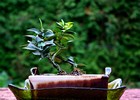 A little while before leaving for Japan, one of my roommates gave me an unusual present, a small tree sprout and a bonsai book. I found the idea quite unusual (and friendly) and after a few hours, following the book instructions, my first bonsai was ready to face the next decade. Then I flew to Japan, leaving my bonsai with my friend who also started a plant.
A little while before leaving for Japan, one of my roommates gave me an unusual present, a small tree sprout and a bonsai book. I found the idea quite unusual (and friendly) and after a few hours, following the book instructions, my first bonsai was ready to face the next decade. Then I flew to Japan, leaving my bonsai with my friend who also started a plant.
Exposition
As I was walking in a park with one of my Japanese friend, we went across a traditional garden. We were both curious, stepped in, and saw the bonsai exhibition that was displayed along the way. Those *small trees* were quite interesting, some of them were more than 200 years old, with irregular shapes but always with a little something that catches the eyes. I liked them, so I wanted to know a bit more about that art.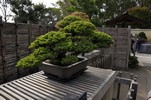
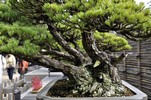
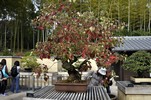
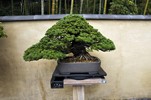
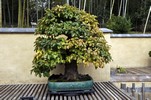
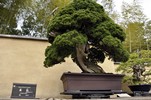
East of Tokyo
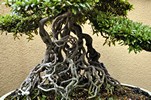 In mid-November, another friend with whom I practice my Japanese (and her French) invited me to visit a Bonsai nursery in the Eastern part of Tokyo. Some very nice specimens were exhibited, and this place had more the feeling of a museum then a nursery, but when we looked closer you could see some bonsai being *treated*.
In mid-November, another friend with whom I practice my Japanese (and her French) invited me to visit a Bonsai nursery in the Eastern part of Tokyo. Some very nice specimens were exhibited, and this place had more the feeling of a museum then a nursery, but when we looked closer you could see some bonsai being *treated*. 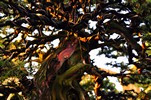 The life of a bonsai seems quite harsh, often full of metallic wires to shape its branches, and some are wired to pull the branches in unnatural positions. After suffering so much, the tree ends up with a different shape and with a much better look.
The life of a bonsai seems quite harsh, often full of metallic wires to shape its branches, and some are wired to pull the branches in unnatural positions. After suffering so much, the tree ends up with a different shape and with a much better look. 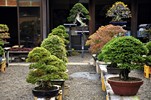 In this bonsai nursery, a former student of the local Master, a gentleman from England, gave us some explanations and showed us around. We were quite lucky to have a private guide (whom I could understand). Before leaving the place, he told me about a mysterious *bonsai village* in the north part of Tokyo, where all the bonsai families fled after the big earthquake of 1923 that hit Tokyo. Next destination : Omiya Bonsai-Mura.
In this bonsai nursery, a former student of the local Master, a gentleman from England, gave us some explanations and showed us around. We were quite lucky to have a private guide (whom I could understand). Before leaving the place, he told me about a mysterious *bonsai village* in the north part of Tokyo, where all the bonsai families fled after the big earthquake of 1923 that hit Tokyo. Next destination : Omiya Bonsai-Mura.
Omiya
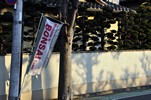 In mid-December, I finally arrived in Omiya koen station, where I was supposed to see some of the finest bonsai collection in Tokyo.
In mid-December, I finally arrived in Omiya koen station, where I was supposed to see some of the finest bonsai collection in Tokyo.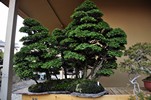 The whole neighborhood lives around bonsais, shops, and signs and of course all is organized for tourists like me. After visiting a few collections (and taking too many photos) I entered the Mansei-En nursery where a friendly American approached me. He had been studying bonsais for almost 2 years so I asked him enough questions to keep him busy till sunset.
The whole neighborhood lives around bonsais, shops, and signs and of course all is organized for tourists like me. After visiting a few collections (and taking too many photos) I entered the Mansei-En nursery where a friendly American approached me. He had been studying bonsais for almost 2 years so I asked him enough questions to keep him busy till sunset.
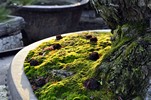 Bonsai owners often use the services of a bonsai nursery to take care of their collection, those kinds of trees sometime need special attention from professionals, or should I say Masters. The Mansei-En nursery was the first one to be established in Omiya after the big earthquake. It has been a family business for 6 generations.
Bonsai owners often use the services of a bonsai nursery to take care of their collection, those kinds of trees sometime need special attention from professionals, or should I say Masters. The Mansei-En nursery was the first one to be established in Omiya after the big earthquake. It has been a family business for 6 generations. 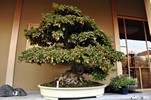 Taking care of bonsais for rich owners is one thing, selling bonsais is another thing. When I asked how much can a bonsai be worth, the answer was not precise, *it’s a piece of art*, it depends on many things, mainly the appreciation of the buyer, the value to the seller, but one thing is sure, if the bonsai Master has just a little doubt that the bonsai might not be well treated, the price is very likely to be too high for the buyer, because one of the main goal to raise a bonsai is to keep the tree alive.
Taking care of bonsais for rich owners is one thing, selling bonsais is another thing. When I asked how much can a bonsai be worth, the answer was not precise, *it’s a piece of art*, it depends on many things, mainly the appreciation of the buyer, the value to the seller, but one thing is sure, if the bonsai Master has just a little doubt that the bonsai might not be well treated, the price is very likely to be too high for the buyer, because one of the main goal to raise a bonsai is to keep the tree alive.
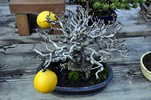 In Japanese, Bonsai means *tree in a pot* but they prefer to say it’s a tree with personality. We must be able to find something a little special when we look at a bonsai, something mysterious.
In Japanese, Bonsai means *tree in a pot* but they prefer to say it’s a tree with personality. We must be able to find something a little special when we look at a bonsai, something mysterious. 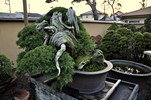 The Mansei-En collection apparently has the oldest bonsai in Japan, or at least the oldest tree which is about 2000 years old; it was made into a bonsai only 70 years ago (picture on the left). I am not sure if it’s a title claim by many nurseries but this one was quite impressive. The discussion with the American man went on to subjects like bonsai philosophy, his experiences in Japan, bonsai competitions, history etc. It was great to get this peek into the fascinating world of a bonsai nursery. I for sure don’t look at those *little trees* the same way now.
The Mansei-En collection apparently has the oldest bonsai in Japan, or at least the oldest tree which is about 2000 years old; it was made into a bonsai only 70 years ago (picture on the left). I am not sure if it’s a title claim by many nurseries but this one was quite impressive. The discussion with the American man went on to subjects like bonsai philosophy, his experiences in Japan, bonsai competitions, history etc. It was great to get this peek into the fascinating world of a bonsai nursery. I for sure don’t look at those *little trees* the same way now.
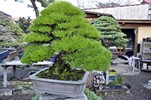 I insisted a bit and finally was given a price for this bonsai, 20,000,000 yens or $264,000. I am not yet sure I will bring it back home!
I insisted a bit and finally was given a price for this bonsai, 20,000,000 yens or $264,000. I am not yet sure I will bring it back home!
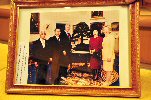 Master Saburo Katoh (left) grand father of the current master of the Mansei-En house with the Japanese Prime Minister as well as 2 foreigners that you might know.
Master Saburo Katoh (left) grand father of the current master of the Mansei-En house with the Japanese Prime Minister as well as 2 foreigners that you might know.
A few more photos
East of Tokyo
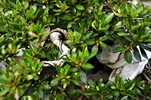

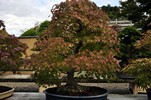
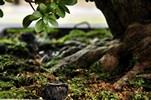
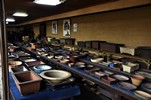
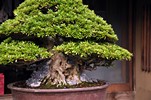
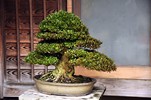
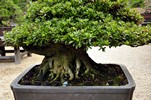
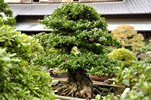

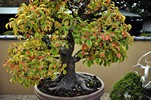

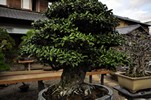
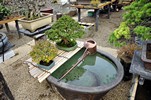
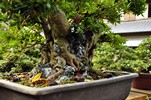
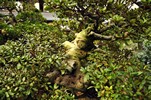
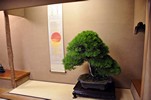
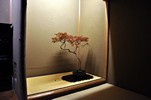
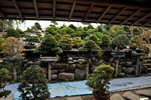
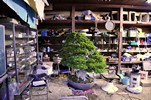
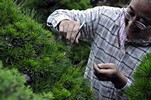
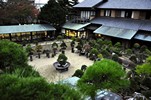
Omiya
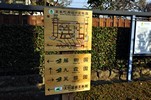
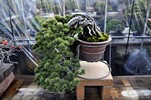
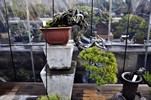
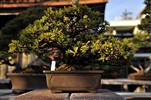
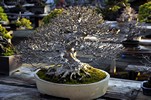
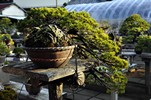
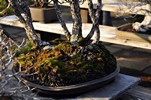
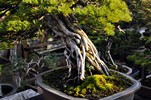
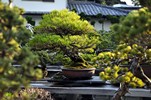
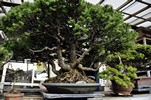
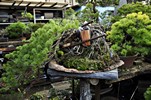
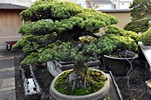
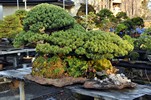
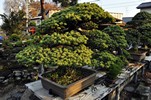
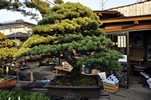
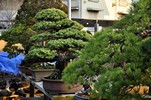
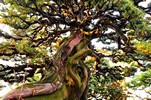
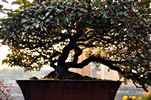
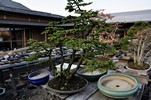
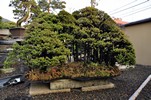
back